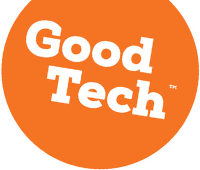How to recycle your e-waste
Recently we looked at the New Zealand E-Waste Problem, and the impact that it was having on the environment. Just to recap, e-waste is the name given to all electronic waste - think chargers and cords through to your old phone or computer. We accumulate an incredible amount of technology in our homes and offices, often more than we might even realise. It’s important to stay on top of what we have and then think carefully about how we dispose of it once we are finished with it.

Here are 6 tips that can help you manage and recycle your e-waste.
- Think about what you’ve already got.
- Repair or refurbish.
Before you buy a new piece of tech, think carefully about if you need it. Could you get your laptop repaired instead of buying a new one? If you do need a new phone, think about buying refurbished instead of brand new. When you buy refurbished, it’s one less phone that ends up as waste.
- Pay it forward.
If there’s still life in your computer, iPad or TV, why not think about selling it or giving it away to your family or friends? And encourage them to do the same. As the old saying goes, one man’s trash is another man’s treasure.
- Ready to recycle.
Most local councils in NZ will have a way of recycling your e-waste, and there are even some commercial recyclers who will pay for your old tech. A quick Google search will show you what options are available in your area.
- Be data safe.
Whether you’re recycling or donating your old tech, it’s important that you have wiped your important personal data. Here are a few helpful guides to walk you through the process. Follow this guide if you are trying to clear a Windows computer, and this one for an Mac. Don’t forget your phone or tablet. If you have an Apple device use this guide and for an Android device follow this the one to check out.
- Live in the cloud.
Why use a USB stick or portable hard drive when you can now easily store your photos, videos and music online? There are loads of different types of cloud storage available such as Dropbox, iCloud, Google Drive, and Samsung Cloud. Check out last months article where we run through your options.












